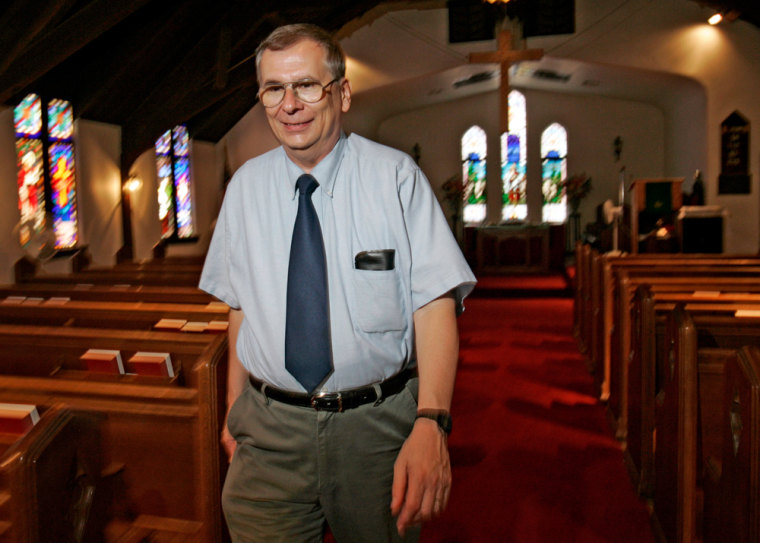Bill Hanousek spends at least four hours a day logged into his TD Ameritrade account, carefully monitoring his investments and outstanding options, and extensively researching his next move.
At the end of the day, he logs off, leaving it all behind to attend to his real job, as minister of the Queensboro Hill Community Church in Flushing, New York.
“This isn’t my focus,” Hanousek says of his trading, despite the time and effort he puts in. “It allows me to do my ministry, which I really enjoy and is my real calling, but I wouldn’t be able to support my family on it.”
Hanousek, 56, has spent ten years as an online trader and some 43 years total as an investor. Most would consider him a “day trader,” akin to those brave — perhaps foolhardy — people who gave up careers to trade stocks during the 1990s stock market bubble.
“I think the term ‘day trader’ was overused. It created expectations in people’s minds, like an easy way to win the lottery,” Hanousek said. “The ones of us who made it through are a lot smarter and wiser now.”
The active trader never went away, though the herd was thinned considerably in the bear market of 2000-2003. Having learned hard lessons from the “irrational exuberance” of the 1990s, these new active traders are doing their homework, hedging their bets and taking on far more advanced trading strategies.
“You certainly don’t have the return of the taxi driver quitting his job to become a day trader,” said Jarrett Lilien, chief operating officer at E-Trade Financial Corp. “And they’re not going after some obscure tiny stock they read about in an e-mail. People are using advanced order types, advanced strategies. They’re making money.”
Certainly, it was easier to make money in the 1990s — buy a stock, hold it for an hour, sell it at a premium because the entire market was rising fairly consistently. The thought that this kind of market would continue indefinitely was the downfall of many active traders, however.
“Nobody then really hedged their bets. They just took on the latest hot stock and rode it out,” said Jay Pestrichelli, managing director of TD Ameritrade’s active trader group. “And not only did those type of traders leave the market, but also the traders who were smarter. When the market was falling after the boom, they just didn’t want to risk it anymore.”
There was no real count of the number of day traders back during the 1990s, but Pestrichelli says that TD Ameritrade estimates about 1 million active traders in the total marketplace. A smaller subset of that 1 million are considered “day traders” in the sense that trading stocks is their primary source of income.
Today’s day traders are smarter, however. E-Trade and Ameritrade report increased use of research offerings, a sign that active traders are doing their homework, not just buying into the latest fad. The holdings themselves tend to be less risky as well.
And today’s active traders often use options to hedge against losses or generate income. An option is the right to buy or sell a stock within a given period of time. Options can be used to mitigate against loss by shareholders looking for someone to buy a stock if it falls below a certain price, or to generate income on stocks by selling an options contract that would allow someone to buy if the stock rises a certain amount.
Options could also be used for highly speculative bets, and options traders don’t even need to own the stock in order to write options contracts — called a “naked” position. However, those kind of trades aren’t as common as they were in the 1990s.
“People used to be highly speculative when it came to options, using them simply as a way to gamble on stocks,” said David Kalt, chief executive of OptionsXpress Holdings Inc., an online trading site specializing in the options trade. “But you’ve got a generation of traders coming in now, looking for yield, hedging against loss, and doing things the right way.”
The new wave of active investors seem to be getting it right, observers say. Whereas the retail investor was once a “contrary indicator” for major Wall Street investors — meaning that when the average person got in on a stock, it was time to get out — now the individual investor is leading the pack.
“It did seem to change overnight, around March of ’03, and the retail investor’s been right more than any other segment of the market since then,” Lilien said. “The people who are out there managing their own money and have the time to do the research, they’re doing just as well, if not better, that the Wall Street guys.”
As more people once again consider the stock market as a potential source of major income, Hanousek is concerned that the younger generation that didn’t experience the dot-com bust will fail to learn from it.
“There are going to be times when you’re not doing well. And when things are going well, don’t believe its solely your intelligence that has you where you are,” Hanousek said. “It’s intelligence, hard work and luck.”
And finally, never invest more than you’re willing to lose.
“You can’t let emotion enter into it at all,” Hanousek said. “If you’re stressing about it, worrying about it, then get out and buy a mutual fund.”
